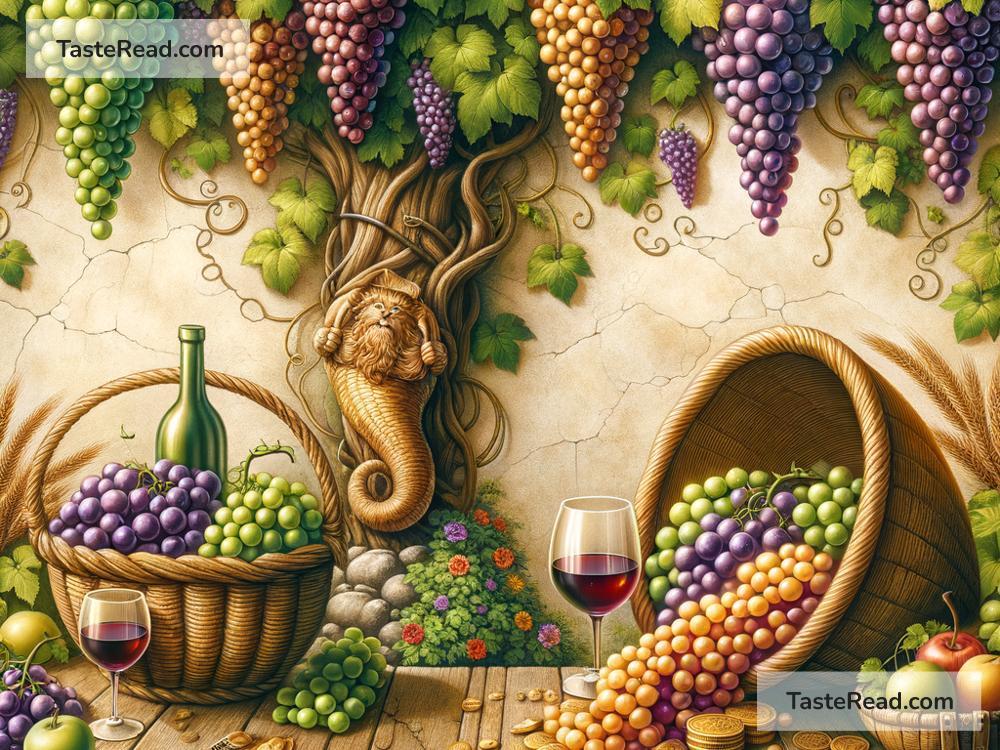The Mythical Connection Between Grapes and Abundance
Throughout human history, grapes have carried a special significance beyond their sweet flavor and ability to make wine. This humble fruit has been revered in many cultures and mythologies as a symbol of abundance, prosperity, and celebration. Whether it’s the luscious vines loaded with bunches of grapes or the sparkling wine flowing during festivities, grapes have always represented plenty and a life of joy. In this article, we’ll explore the mythical connection between grapes and abundance in simple, clear language.
Grapes in Ancient Mythology
Grapes appear in the stories of many ancient civilizations, most notably those of Greece and Rome. In Greek mythology, the god Dionysus (also called Bacchus in Roman mythology) was associated with wine, fertility, and revelry. Dionysus was said to have introduced wine to humanity, teaching people how to cultivate grapevines and use them to enjoy life’s pleasures.
Wine, which directly comes from grapes, became more than just a drink. It symbolized joy, passion, and abundance. The process of crushing grapes to create wine was often celebrated as a divine ritual, representing transformation and the ability to create goodness from nature’s bounty. The festivals dedicated to Dionysus, known as Bacchanalia in Roman tradition, were lively gatherings full of singing, dancing, and wine-drinking—an embodiment of prosperity and overflowing abundance.
The imagery of grapevines growing in fertile lands helped cement grapes’ association with abundance. People saw grapevines thriving year after year, providing not just food but also the raw materials for wine, which often played a central role in religious ceremonies and communal celebrations.
Grapes as a Symbol in Art and Literature
The idea of grapes symbolizing abundance can be seen in centuries of art and literature. Paintings and sculptures from ancient times often show clusters of grapes in scenes of feasts, celebrations, or depictions of gods and goddesses. The inclusion of grapes in these works signified not just wealth but also harmony and a life of balance.
In Christian art, grapes sometimes appear as symbols of spiritual abundance. In many Biblical texts, grapes and wine represent the blessings of God and divine generosity. For example, in Psalm 104:15, wine is described as bringing joy to the human heart, connecting it to happiness and abundance.
Throughout European history, grapes were often associated with harvest festivals, marking the end of agricultural seasons with gratefulness for nature’s plenty. These festivals celebrated the grape harvest with food, drink, music, and togetherness, reinforcing the belief that grapes represented a bountiful life.
Grapes and Prosperity in Other Cultures
The connection between grapes and abundance isn’t limited to Greek or Roman mythology. Other cultures also recognized the fruit as a sign of wealth and prosperity. In ancient Egypt, grapes were considered a luxurious food that only the elite enjoyed. They were often part of the offerings to gods and pharaohs, symbolizing richness and eternal blessing.
In Chinese culture, grapes are linked to fertility and family prosperity. The fruit grows in bunches, which is seen as a representation of strong family ties and multiplied wealth. A bowl of grapes, arranged thoughtfully, might appear in traditional artworks as a wish for good fortune and unity.
Similarly, in other regions of the world, grapevines were viewed as gifts from the earth—valued for their capability to thrive and deliver fruit year after year. From the remote villages of Europe to the sunlit vineyards of the Middle East, the image of grapes has long represented sustainability and an ongoing flow of life’s treasures.
Grapes in Modern Times
Today, grapes retain their magical connection to abundance. The fruit is often included in celebrations such as New Year’s Eve, where in Spain and Latin America, eating 12 grapes at midnight is believed to bring good luck for the 12 months ahead. This fun tradition has roots in the idea that grapes represent prosperity and a fortunate year to come.
The wine industry, which relies heavily on grapes, continues to celebrate the fruit as a gift that brings people together. From vineyards where the harvest is ceremoniously gathered to wine-tasting events where bottles are shared among friends, grapes hold their place as symbols of plenty, togetherness, and enjoyment.
Whether enjoyed fresh, dried as raisins, or turned into wine, grapes remind us that life’s blessings come in many forms. The fruit itself grows in abundance, reflecting nature’s generosity, and its role in celebrations represents the joy we feel when we come together to share life’s bounty.
Conclusion
What makes grapes so fascinating is their ability to bridge the worlds of myth, culture, and everyday life. Their role in ancient stories, art, and traditions shows us how humans have always viewed them as a symbol of abundance—of having more than enough to nourish not just the body, but also the spirit.
The clusters of grapes hanging gracefully from vines remind us of the potential for growth and prosperity, while the wine they produce teaches us to celebrate life’s richness. So, the next time you see a bunch of grapes or open a bottle of wine, take a moment to remember its mythical connection to abundance and all the good things life has to offer.


